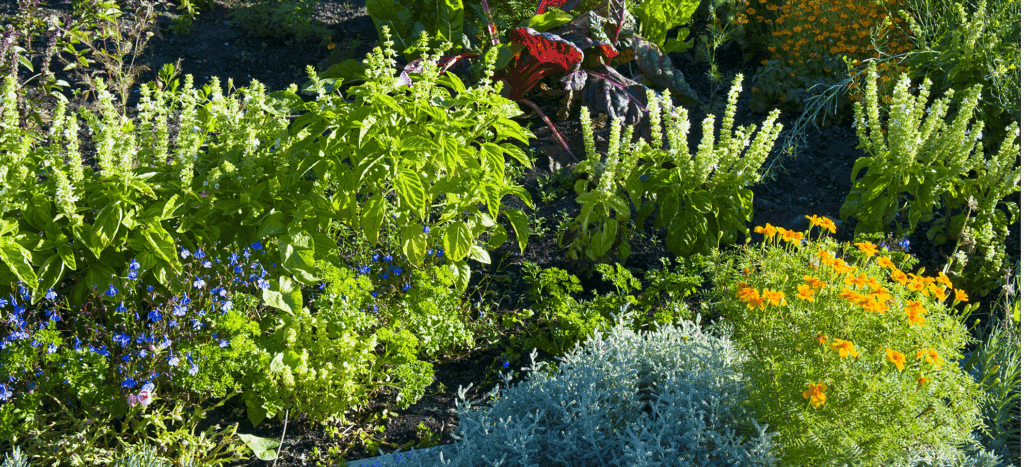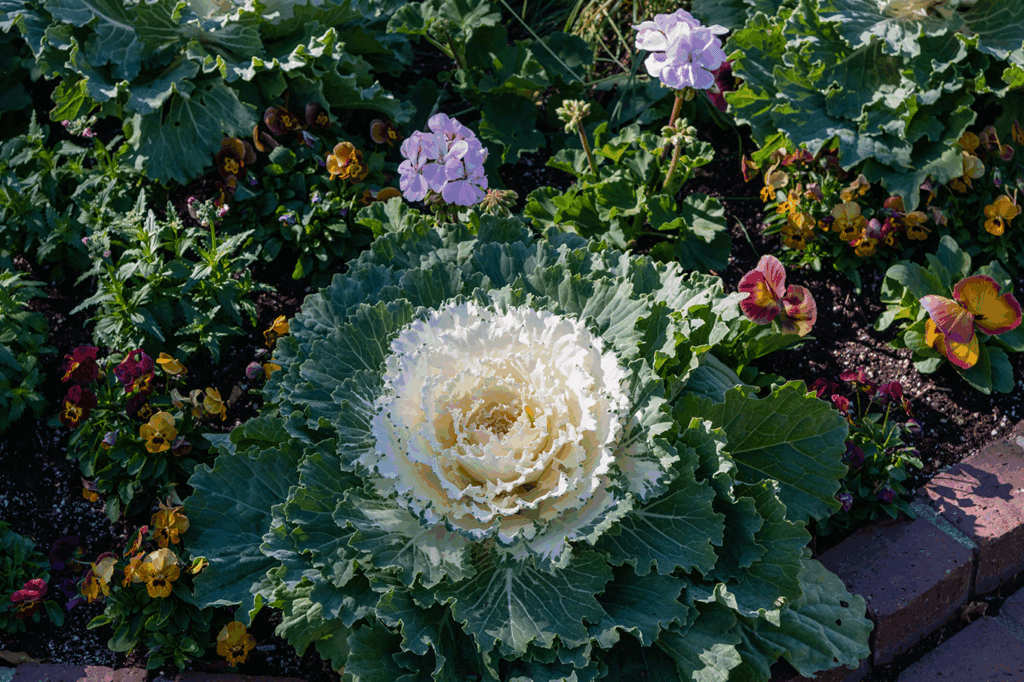


When most people think about landscaping, they picture sculpted hedges, decorative flowers, and pristine mulch beds but what if those beautiful beds also fed your family?
Today’s homeowners are turning their yards into spaces that look incredible and give back in a delicious way. Welcome to the world of edible landscaping where your curb appeal and your kitchen both win.
What Is Edible Landscaping?
Edible landscaping is the practice of integrating food-producing plants into traditional landscape design. Instead of filling your yard with plants that only serve a visual purpose, why not design with fruits, vegetables, herbs, and even edible flowers that look amazing and offer harvests throughout the season?
You don’t need a vegetable garden to enjoy fresh food from your yard. You just need smart design and a fresh perspective. A well-designed Michigan edible landscape brings out the best of form and function.
Where Beauty Meets Bounty: Why Edible Landscaping Works
The secret to making edible landscapes shine is balance. Think structured beds with ornamental kale, winding paths lined with strawberries, or a pergola draped in grapevines. Done right, these elements rival the most elegant ornamental gardens.
Here’s how you can transform your yard with edible appeal while still keeping the polished, professional landscape design HMK is known for:
Design Tips for Edible Elegance
1. Start with Structure
Raised beds, stone borders, or hardscape features like walkways and trellises give your edible landscape form. Think geometry: curved beds for herbs, linear rows for lettuce, and vertical trellises for climbing beans or cucumbers.
2. Replace the Usual Suspects
Swap standard hedges for blueberry bushes that offer spring blooms, summer berries, and fiery fall color. Replace ornamental grasses with chives or lemongrass. Boxwoods out, rosemary in.
3. Color with Purpose
Use the bold reds of Swiss chard, the silvery glow of artichoke leaves, or the jewel tones of purple basil to create color stories in your landscape. Interplant bright marigolds with tomatoes to attract pollinators and keep pests at bay; style and sustainability in one.
4. Think Vertical
Don’t forget the walls and fences. Add climbing snap peas, scarlet runner beans, or even espaliered fruit trees for height and interest. Vertical gardening opens space and turns boring walls into edible art.
5. Container Drama
Want a punch of color on your patio? Try a pot of dwarf eggplants, surrounded by creeping thyme. Use a painted whiskey barrel to grow strawberries with holes on the side for extra plants and extra fruit.
6. Blend the Unusual
Try mixing kale into your flower beds or planting herbs as borders. Place lavender and oregano along a path, so brushing past releases fragrance. The result is a landscape that engages every sense.
Edible Landscape Ideas for Every Michigan Yard
Whether you live in the suburbs of Ann Arbor or on a country lot outside Lansing, edible landscapes can thrive in Michigan’s seasons. Here are a few combinations perfect for our climate:
- Hardy Blueberries + Native Bee Balm: Great for pollinators and bursting with color and flavor.
- Kale + Pansies: Beautiful and frost-hardy, this combo works deep into fall.
- Tomatoes + Basil + Marigolds: A classic trio that looks just as good as it tastes.
- Lavender + Strawberries: The calming scent of lavender acts as a pest deterrent and pairs beautifully with low-growing, sweet strawberries. A perfect combo for borders or raised beds.
- Purple Basil + Orange Marigolds: These two are natural pest fighters—and the rich purple and vibrant orange create an eye-catching contrast. Bonus: pollinators love them both.
- Rainbow Chard + Dusty Miller: Pair the silvery foliage of dusty miller with the bold stems of rainbow chard for a bed that looks like modern art and tastes like dinner.
- Tomato + Borage + Nasturtium: A triple-threat planting: tomatoes get a pollination boost from borage, nasturtium keeps pests away, and both flowers are edible and beautiful.
- Sage + Coneflower (Echinacea): Sage brings texture and earthy fragrance while echinacea offers height, color, and attracts pollinators. Together, they look wild and purposeful.
- Blueberry Bushes + Daffodils: Plant daffodils around your blueberries to deter critters, and enjoy a burst of yellow in early spring before the berry show begins.
- Red Russian Kale + Violas: A cool-season favorite. The ruffled, purplish leaves of kale pair well with soft-toned violas, which are edible and stunning in salads.
- Raspberries + Bee Balm (Monarda): Bee balm helps attract pollinators to raspberries while adding height and bold color. This duo thrives along fences or as a screen.
- Lettuce + Sweet Alyssum: Lettuce varieties offer vibrant greens and reds, while alyssum spreads low and brings a honeyed scent that attracts beneficial bugs.
- Peppers + Ornamental Grasses (like Blue Fescue): Add drama and structure to containers or small beds with short grasses and bushy pepper plants in red, yellow, or purple varieties.
- Cucumbers + Sunflowers: Let cukes climb up the sturdy stalks of sunflowers. This pairing gives you shade-loving ground space and vertical visual interest.
- Rhubarb + Ferns (in shady corners): Create a lush, tropical vibe with rhubarb’s bold foliage and hardy native ferns. Works especially well in partial shade.
- Apples (Espaliered) + Lavender Undergrowth: Espaliered apple trees on a wall or fence save space and add elegance. Lavender beneath helps with pollination and adds scent and color.
- Arugula + Calendula: Peppery arugula and bright calendula flowers pair well for a cut-and-come-again salad garden with visual pop.
- Onions + Chamomile: The upright shape of onions looks great beside the soft mounding growth of chamomile, and both contribute flavor and medicinal use.
Creative edible landscaping brings purpose to every plant. It’s a smart investment in your health, your home, and your daily life.
